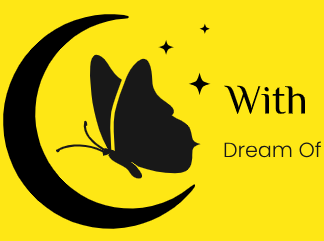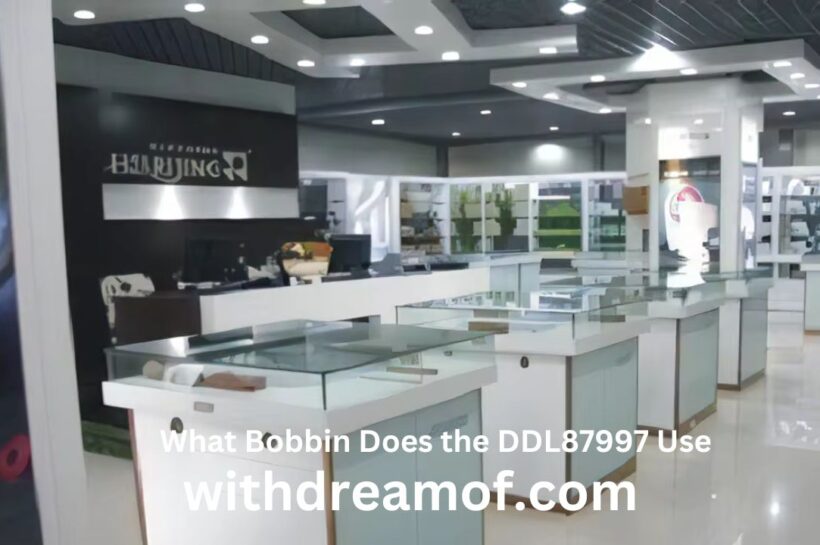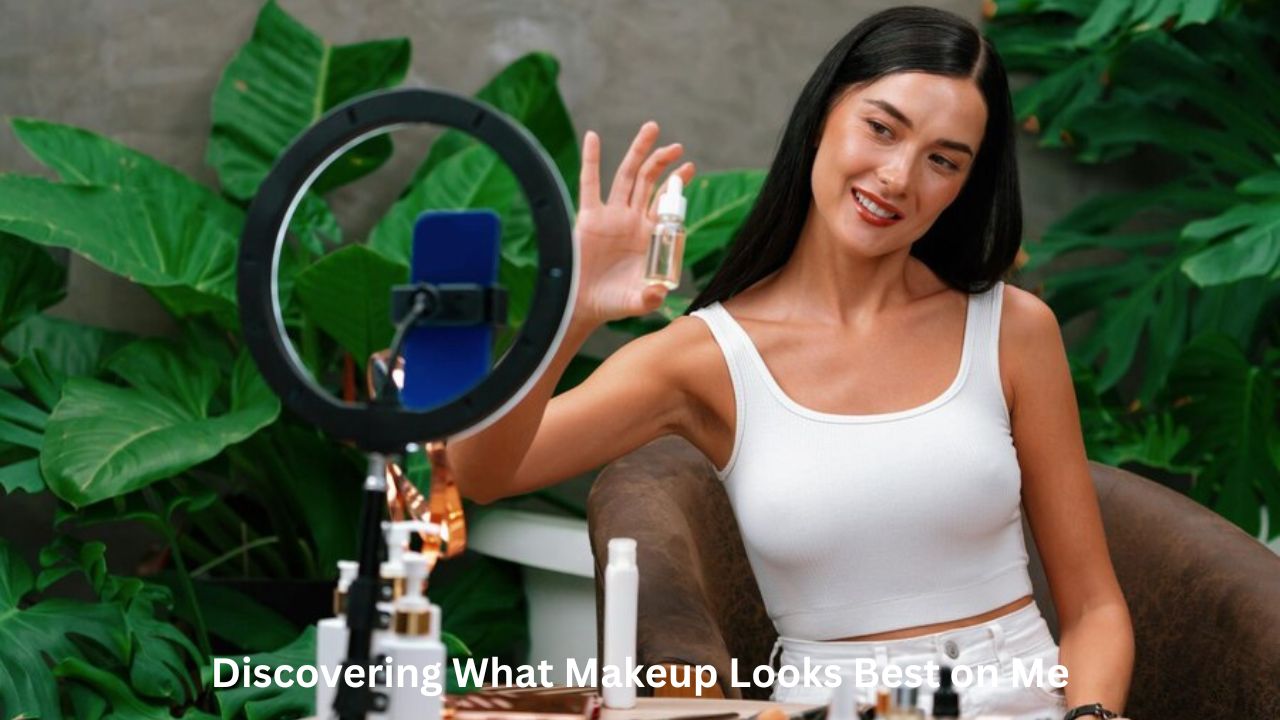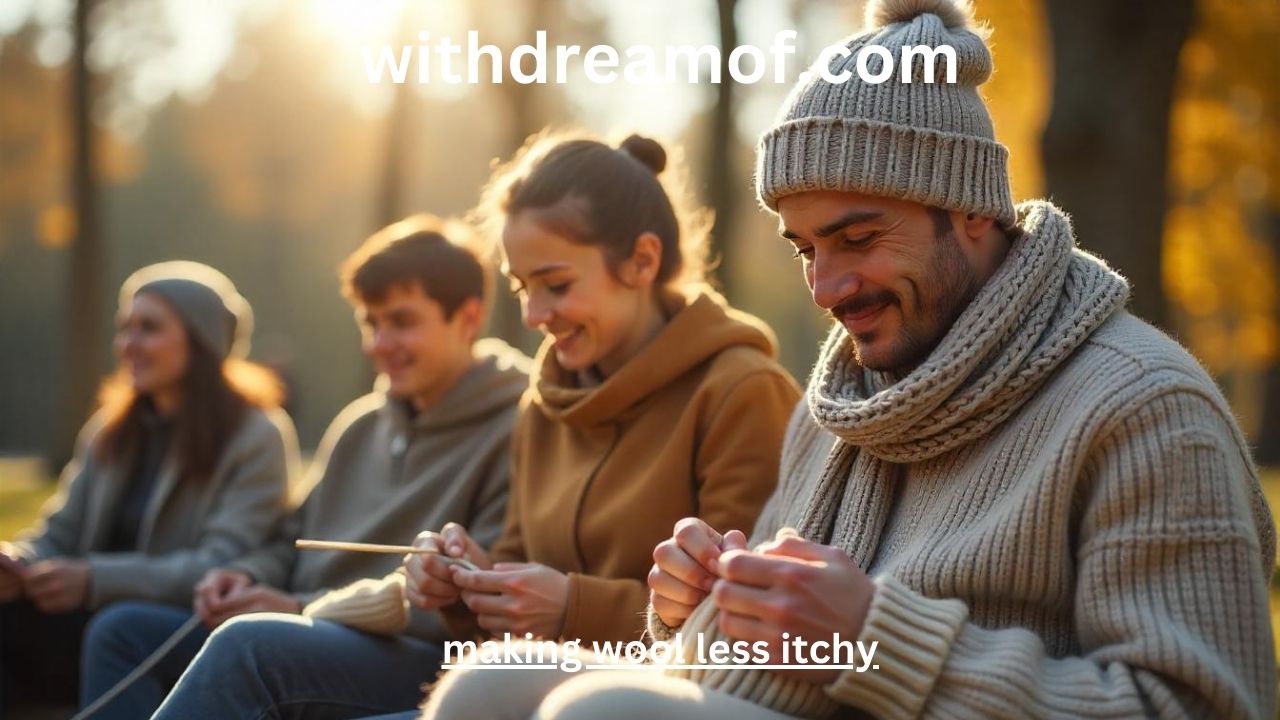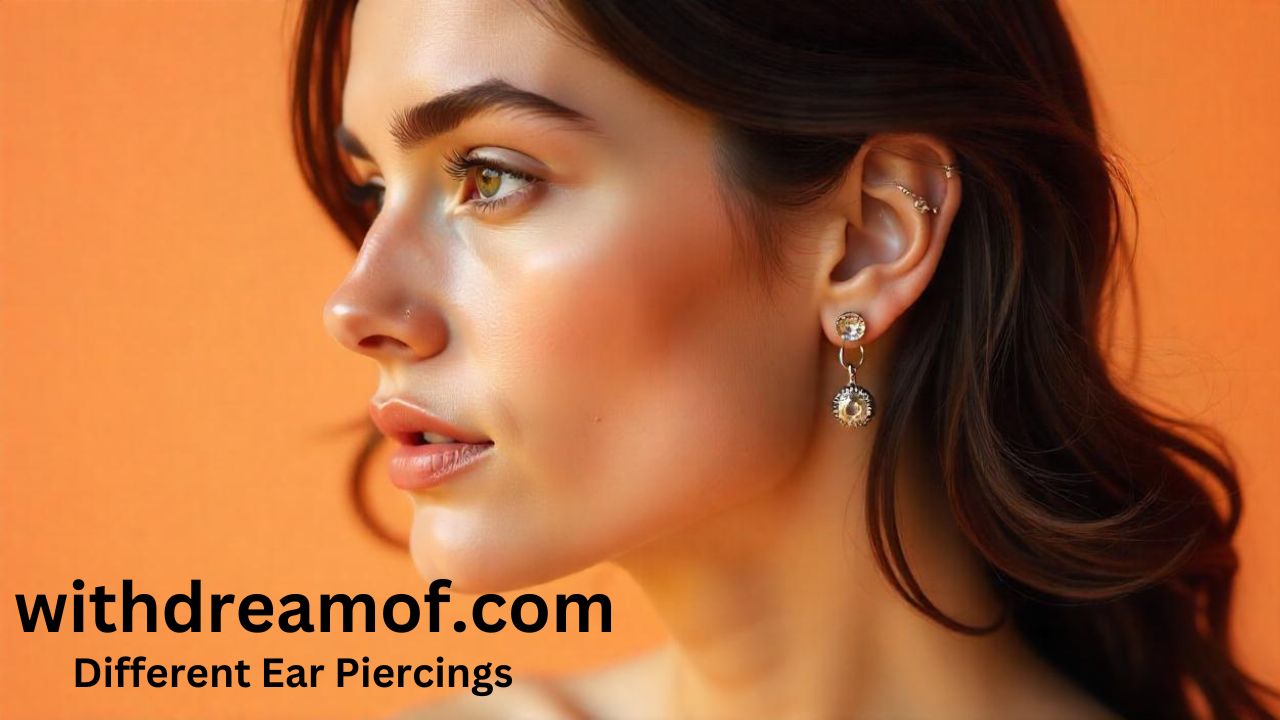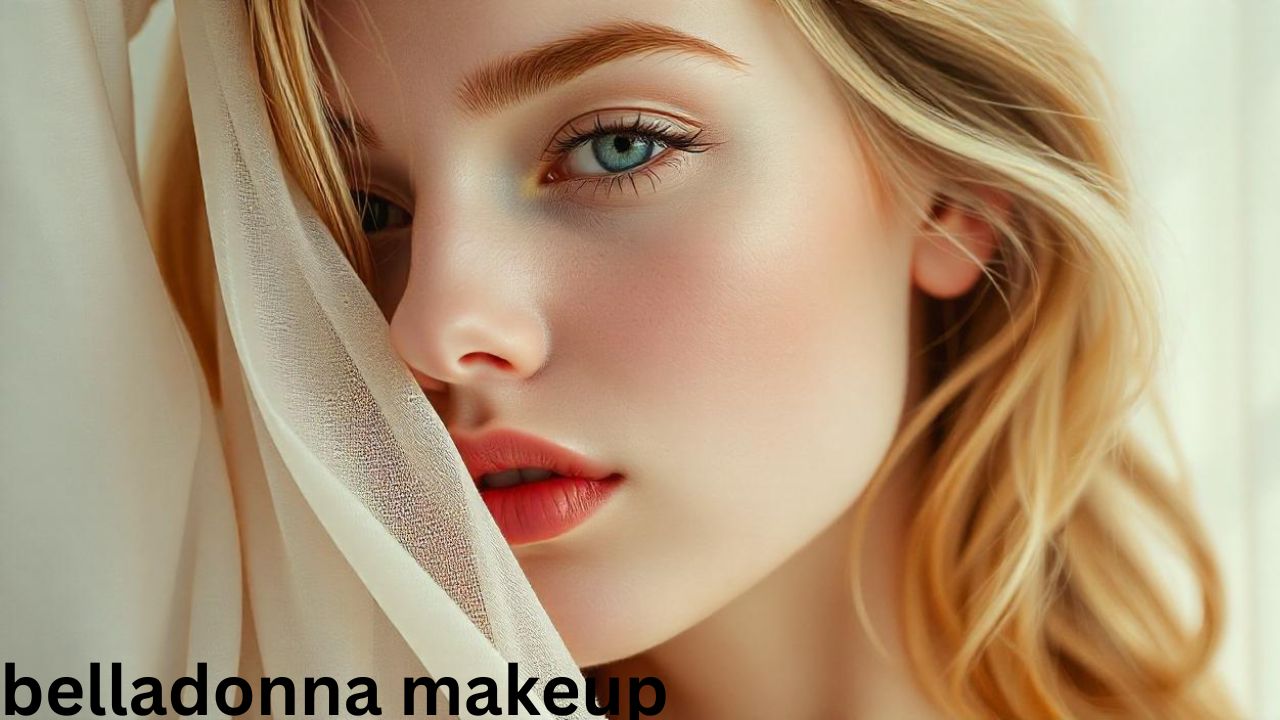Discovering What Makeup Looks Best on Me, Expert Tips and Techniques. Choosing what makeup looks best on me can feel overwhelming, especially with endless products and techniques available. Each person’s unique features, like skin tone, face shape, and eye color, play a crucial role in determining the most flattering makeup style. From understanding your undertones to mastering contour and color choices, finding the right makeup style brings out your best features naturally. This guide explores the key aspects to help you discover a makeup routine that highlights your individuality and beauty.
Understanding Skin Tone and Undertone for the Best Makeup Match
One of the first steps in determining what makeup looks best is understanding your skin’s tone and undertone. Skin tone refers to your skin’s surface color, while undertone is the subtle hue underneath. Knowing both can help you pick shades that look natural and balanced.
- Warm Undertone: Skin with a warm undertone has a yellow, peach, or golden base. Choose earthy tones like bronze, peach, coral, and copper, which enhance warmth and add a natural glow.
- Cool Undertone: Cool undertones lean towards pink, blue, or red hues. Shades like plum, rose, and blue-based reds complement cool skin, creating an elegant, fresh look.
- Neutral Undertone: A neutral undertone mixes both warm and cool. Those with neutral skin tones have more flexibility and look good in a wide range of colors, from soft pinks to warm browns.
Knowing your skin tone allows you to pick foundations, blushes, and lip colors that naturally enhance your complexion without overwhelming it.
Choosing the Right Foundation and Concealer for Your Skin
Foundation creates a smooth base and enhances natural beauty when chosen well. First, select a formula that suits your skin type.
- Dry Skin: Use hydrating or dewy foundations, which add moisture and create a luminous finish. Cream and liquid foundations work best.
- Oily Skin: Try matte or oil-free foundations, which reduce shine and help control oil. Powders and mousse-based foundations are ideal.
- Combination Skin: Opt for foundations with a natural finish, balancing hydration without adding excessive shine.
For a flawless look, choose a concealer that is one shade lighter than your foundation. Use it under your eyes and on blemishes to create an even complexion and a bright, lifted effect.
Enhancing Eye Makeup Based on Eye Shape
Eye makeup transforms the face, drawing attention to your eyes. Understanding your eye shape can help you determine which techniques highlight your eyes best.
- Almond Eyes: Almond eyes suit most makeup styles. Accentuate their shape with winged eyeliner and soft, gradient eyeshadows.
- Hooded Eyes: Hooded eyes benefit from lighter shades on the lid and darker shades on the outer corners to open up the eyes. Avoid heavy eyeliner on the upper lid.
- Round Eyes: Elongate round eyes by applying darker shades on the outer half of the eye and using a soft, smudged liner.
- Monolid Eyes: Create depth by layering eyeshadow and using a gradient from light to dark. A thin eyeliner helps define the eyes without overwhelming them.
When it comes to colors, neutral shades complement most eye colors, while bolder hues enhance natural eye shades.
Selecting Eyeshadow Colors to Compliment Your Eye Color
Eyeshadow colors can make your eyes pop when chosen thoughtfully. Here’s a quick guide to selecting shades based on eye color:
- Blue Eyes: Shades of bronze, warm brown, and gold contrast beautifully with blue eyes, enhancing their natural brightness.
- Green Eyes: Try plum, mauve, and warm browns to make green eyes appear more vibrant.
- Brown Eyes: Almost any color suits brown eyes, but shades like navy, copper, and purple create a striking effect.
- Hazel Eyes: Play with greens, golds, and bronzes to bring out the varied tones in hazel eyes.
Don’t hesitate to experiment with colors to find the shades that truly make your eye color stand out.
Perfecting Eyebrow Shape and Color
Eyebrows frame your face and can change your look significantly. Finding the right shape and color for your brows enhances your features without overpowering them. Aim to match your brow shade with your natural hair color or go one shade lighter for a soft look.
- Round Faces: A higher, arched brow shape elongates the face, giving it more definition.
- Square Faces: Softer, rounded brows balance the angles of a square face.
- Heart-Shaped Faces: A slight arch with a round shape softens the face’s contours.
Brow gels, powders, and pencils allow you to shape and fill brows to create a natural or bold look, depending on your preference.
Highlighting and Contouring for Your Face Shape
Highlighting and contouring add depth, dimension, and symmetry to your face. Different face shapes benefit from specific contour placements to achieve the best look.
- Round Faces: Apply contour on the temples, under the cheekbones, and along the jawline to add structure.
- Square Faces: Focus contour on the sides of the forehead and jawline, softening strong angles.
- Oval Faces: Light contouring under the cheekbones enhances the natural shape of an oval face.
- Heart-Shaped Faces: Contour along the forehead’s edges and under the chin to balance a wider forehead and narrower chin.
Use a highlighter on the high points of your face—cheekbones, brow bones, and the bridge of the nose. This technique adds a soft, radiant glow that complements contouring.
Blush Choices Based on Skin Tone and Face Shape
Blush adds a healthy, youthful flush to the face. The key to choosing blush is finding shades that match your skin tone and applying them based on your face shape.
- Light Skin: Soft pinks, peaches, and light corals give a natural flush without overpowering fair skin.
- Medium Skin: Try warm pinks, apricots, and rich corals, which enhance medium skin tones beautifully.
- Dark Skin: Deep berries, plums, and warm bronzes add a flattering pop of color to deeper skin tones.
Applying blush to the apples of the cheeks creates a round, youthful look, while brushing it along the cheekbones lifts and sculpts the face.
Finding the Perfect Lip Color
Lip color is a statement, whether you choose a bold or natural shade. When deciding on lip color, consider your skin undertone and the occasion.
- Nude Shades: Nudes flatter every skin tone when chosen carefully. Light pink-beige tones suit fair skin, while warm browns work well for deeper skin tones.
- Bold Colors: Reds, plums, and berries create a bold look. Choose blue-based reds for cool undertones and orange-based reds for warm undertones.
- Natural Tints: Soft pinks and mauves create a subtle, everyday look that enhances natural lip color.
Experimenting with different lip shades helps you find colors that feel authentic and highlight your features.
Creating a Makeup Routine for Different Occasions
Everyday makeup and special occasion makeup differ in intensity and style. For a daytime look, choose lightweight foundations, soft eyeshadows, and neutral lips for a fresh, natural appearance. Evening makeup allows for a bolder style, so don’t hesitate to experiment with darker eyeshadows, statement lips, and dramatic lashes.
Consider your outfit and personal style for each occasion. While a smoky eye may suit an evening event, a simple winged liner and nude lip create a polished look for daytime events.
Tips for Long-Lasting Makeup
To make your makeup last, especially for long days or events, apply a primer before foundation. Primers create a smooth surface, reduce oiliness, and help makeup adhere. Set your foundation with a light dusting of translucent powder, which controls shine without making your skin look flat. Finish with a setting spray for added longevity and a natural, dewy finish.
Practicing Makeup Techniques for a Polished Look
Creating a polished look takes practice. Play with different techniques, experiment with colors, and refine your application skills. Take time to learn the basics of blending, applying foundation evenly, and using makeup brushes effectively. Watching tutorials and trying out looks at home can boost your confidence, allowing you to feel more comfortable and creative with makeup.
Conclusion
Finding what makeup looks best on me means understanding your unique features and embracing makeup as a form of self-expression. From choosing colors that match your skin tone to mastering techniques suited for your face shape, the process helps you highlight your natural beauty. So, experiment, enjoy the journey, and use these tips to discover the makeup look that makes you feel confident and beautiful.
FAQs
How do I determine my undertone for makeup?
Look at your veins; if they appear blue, you likely have cool undertones. Green veins indicate warm undertones.
What’s the best foundation for oily skin?
Matte or oil-free foundations work well for oily skin as they reduce shine and control excess oil.
What colors suit blue eyes the best?
Bronze, warm brown, and gold shades complement blue eyes, enhancing their brightness beautifully.
How should I shape my eyebrows based on face shape?
Round faces suit high arches, while square faces benefit from softer, rounded brows to balance angles.
What blush color looks best for dark skin?
Deep berry, plum, and warm bronze blush shades add a natural, flattering pop of color for dark skin tones.
Should I wear bold or neutral lip colors?
Choose based on the occasion. Neutrals work well for daily wear, while bold colors make a statement for special events.
